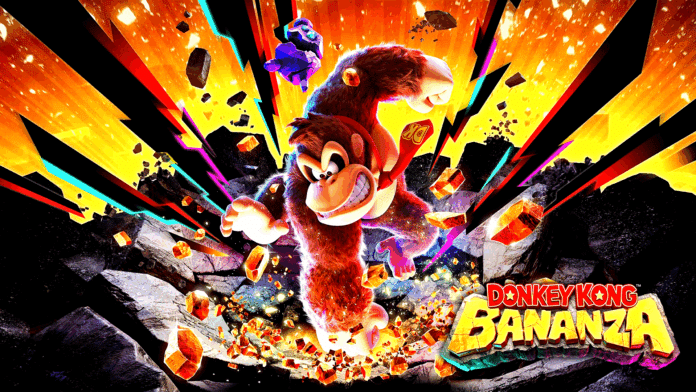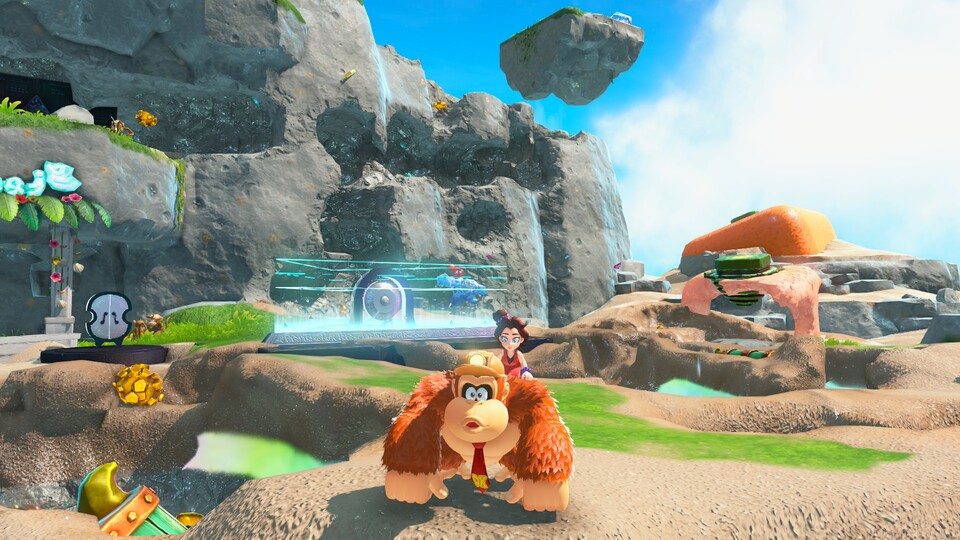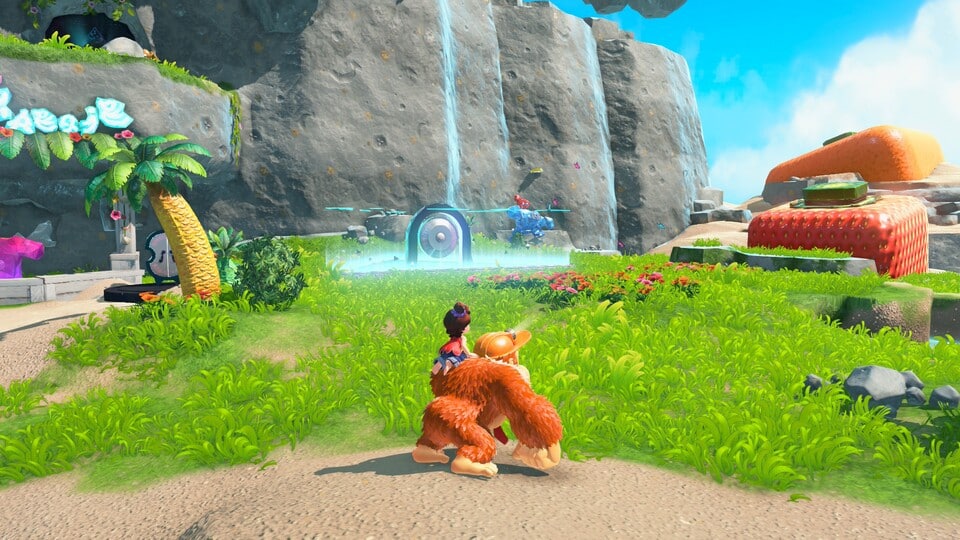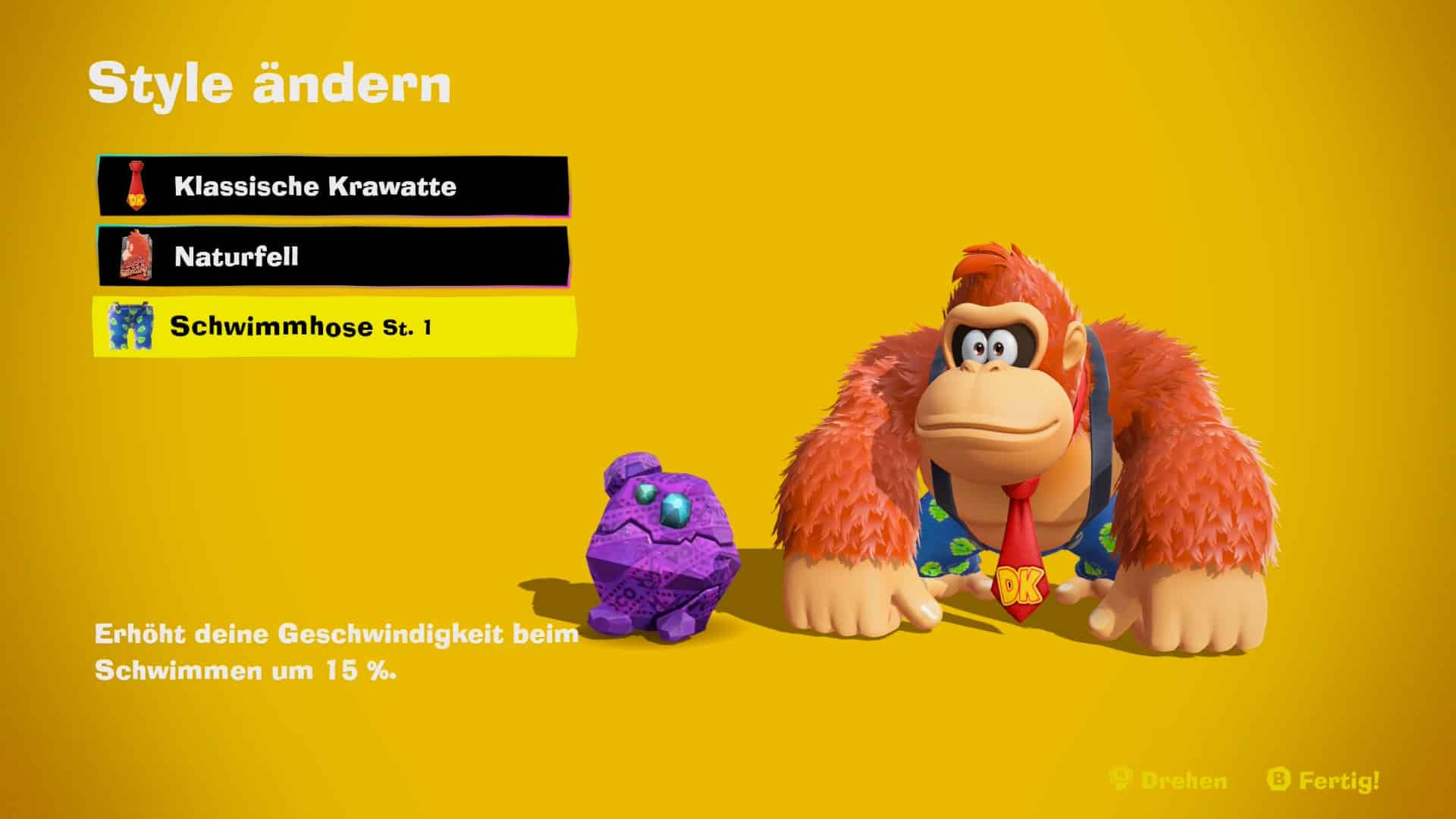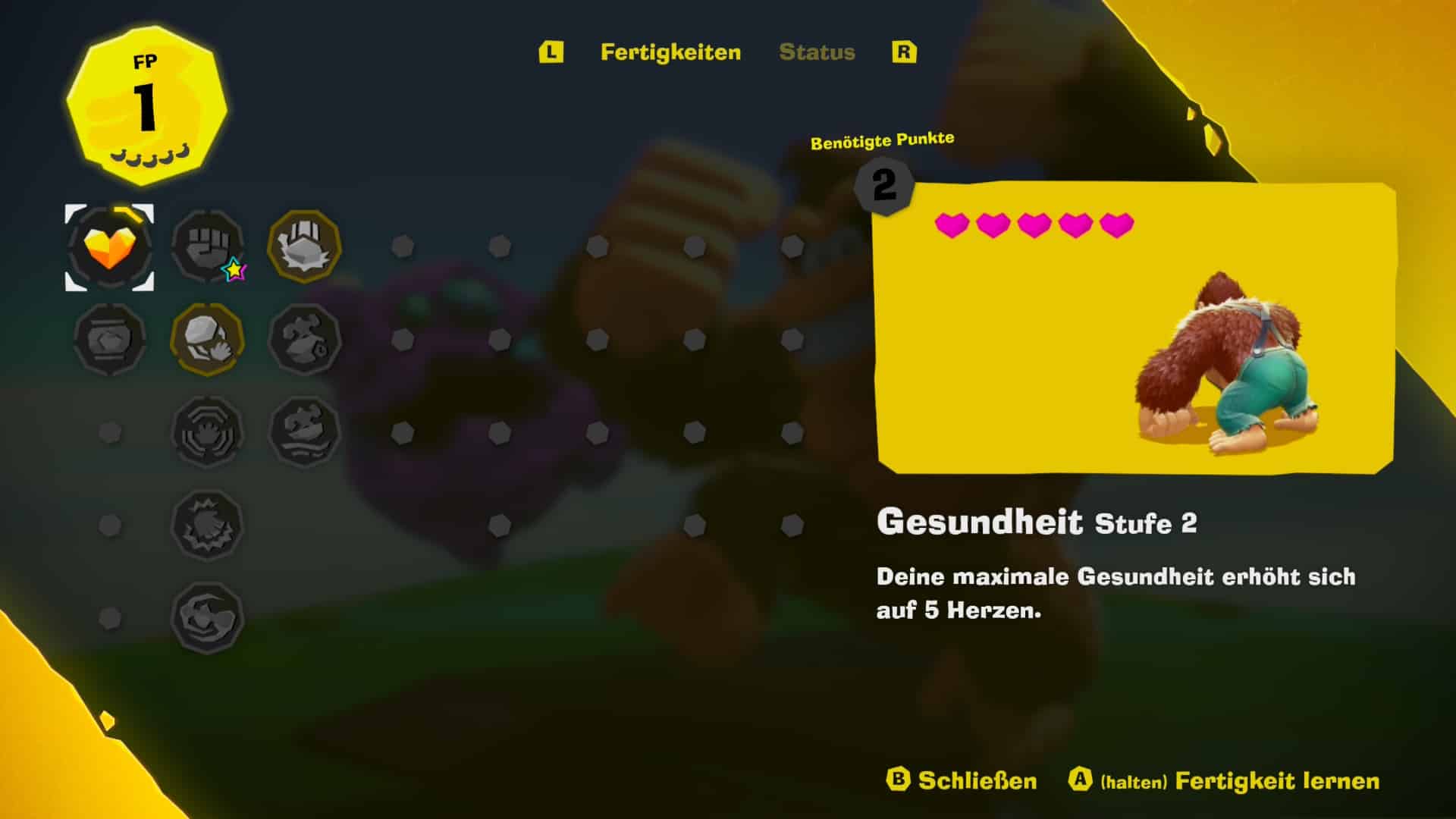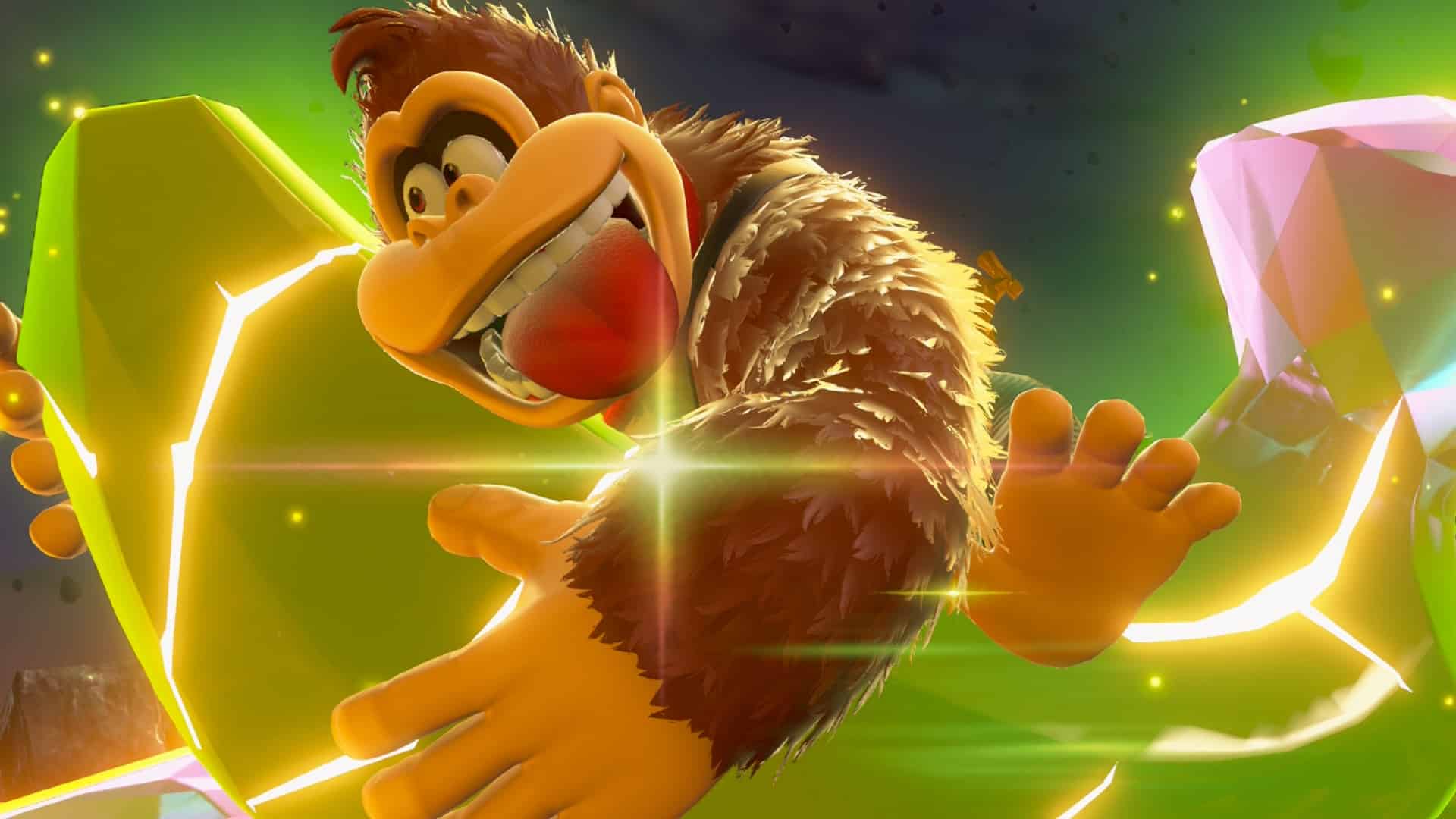What a comeback! Over 20 years after his last 3D adventure, the monkey is climbing right to the top at Nintendo.
Nintendo has been attacked! In September 2024, Sony launched an offensive against its long-standing Japanese rival with the magnificent Astro Bot. The target: Nintendo’s flagship product, family-friendly jump ‘n’ run games.
Sony was successful. The creative adventures of the cute robot ruthlessly exposed that Super Mario and Co. finally needed to try something new and move away from their tried-and-tested but uninspired basic formula.
Astro Bot shook Nintendo’s previously unassailable throne in the genre. Since then, the big question has been: Will Nintendo come up with the right answer?
Now we can say: Wow, and how! Nintendo has created a masterpiece with Donkey Kong Bananza and impressively makes it clear who’s boss here.
Capitalism on Monkey Island
Everything could be so wonderful! A mysterious material called Banandium shoots out of the ground and solidifies into delicious bananas. No wonder Donkey Kong rushes to fill his belly.
Unfortunately, the Void Company also has its sights set on the tasty Banandium. The mining company wants to claim the valuable raw material for itself and its sinister plans, and without further ado sinks the entire monkey home underground. Donkey Kong is also dragged into the depths against his will.
After a hard landing, Nintendo’s longest-serving mascot quickly makes the acquaintance of a talking rock, who convinces him to set off for the planet’s core together. Not only is the origin of Banandium said to lie there (DK thinks with his stomach, after all), but also a power that grants wishes.
And since the talking rock is actually a young singer named Pauline who desperately wants to return home, the unlikely pair could really use a wish granter. So they set off together on a journey deeper into the planet’s interior.
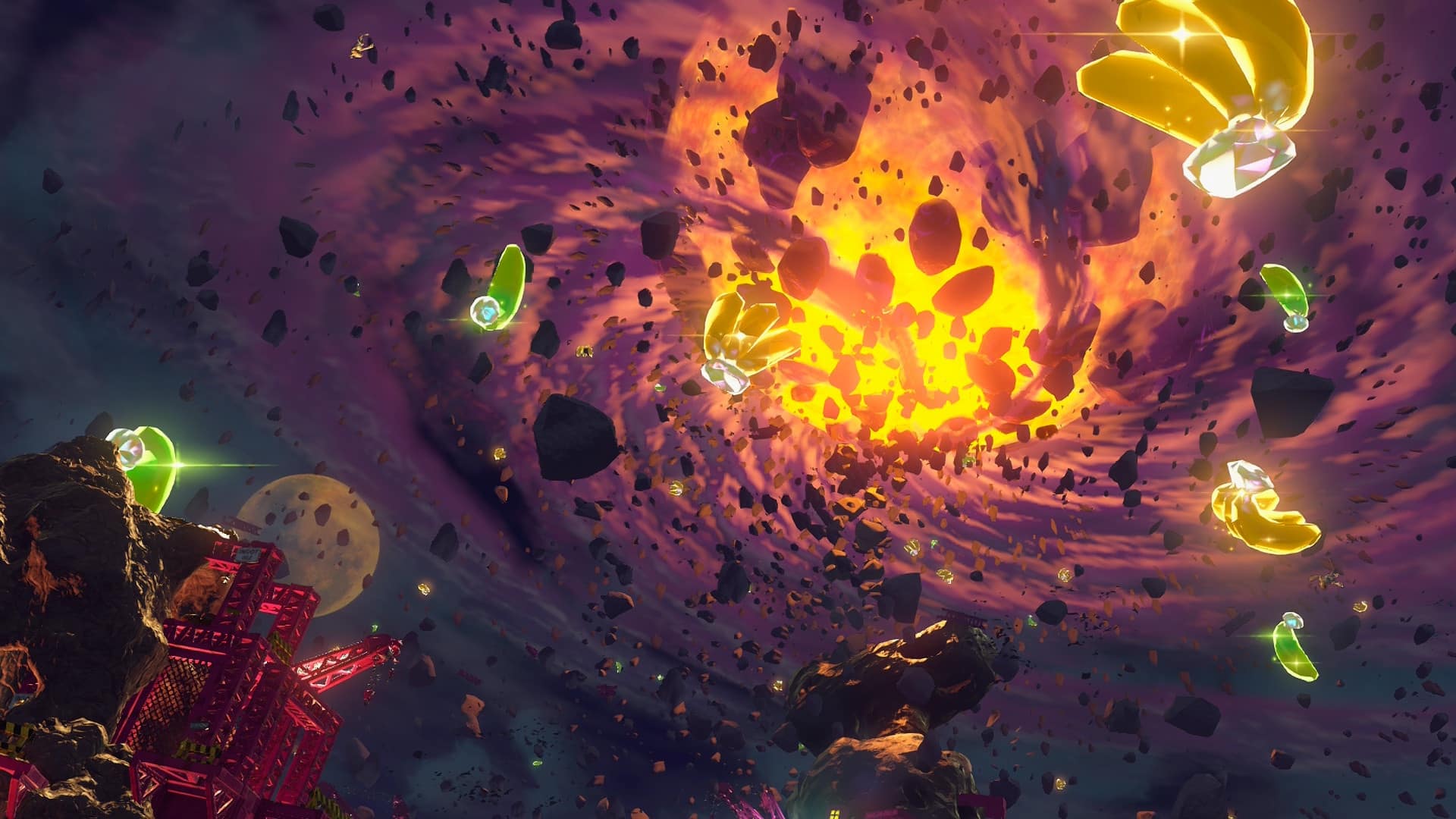
Two fists for a hallelujah
Donkey Kong’s fists are a central element of the game. They can be used to completely destroy large parts of the game world. This is not only innovative in terms of gameplay, but also technically impressive on the Nintendo Switch 2.
The team behind Super Mario Odyssey uses so-called “voxels” to create the visually stunning deformation of the environment. This rendering method is very computationally intensive, as the remaining terrain has to be recalculated around the point of impact after each of Donkey Kong’s punches.
Pixels? Voxels? The difference explained
A pixel, short for “picture element,” is the basic building block of a two-dimensional image. Every digital image consists of a grid of thousands of these colored dots. Each pixel has a specific color and brightness value, and when arranged together, they create the images on our display.
A voxel, on the other hand, is the three-dimensional counterpart to a pixel. The term is a combination of “volume” and “pixel.” Instead of a flat square, a voxel is a cube that occupies a specific space in a three-dimensional grid. Each voxel contains a value that represents a property within that 3D space, such as color, density, or material.
In video games, voxels are the ideal means of representing realistic deformations of terrain. However, the increased amount of information involved in calculating and updating voxels also significantly increases the computing load. The fact that Donkey Kong Bananza still runs at 60 frames per second, with a few exceptions, is quite impressive.p>
p>
This excessive use of voxels would have been impossible on the Switch 1. This also explains why Donkey Kong Bananza is a graphically pretty game, but not a stunningly good-looking one. The development team prefers to use the power of the Switch 2 for creative ideas, and this decision is paying off.
It’s great fun to break through walls with Donkey Kong’s fists, smash rocks and use the debris as projectiles, or punch your way deeper underground. Large parts of the regular gameplay are a maximum destruction orgy, behind whose seemingly simple facade a surprisingly complex and, above all, insanely creative game design ensures lasting enthusiasm.
After a short familiarization phase, the controls are easy and intuitive. Only the camera gets a little stuck when Donkey Kong ventures too deep into a mountain or into the ground. This can sometimes cause you to lose your bearings, but thanks to the well-thought-out level design, this is rarely a real problem. Just keep boxing your way in any direction and you’ll come out somewhere – thanks to voxel destruction!
Here are a few insights into everyday life as DK:
Be amazed layer by layer
The excitement grows the deeper Donkey Kong and Pauline venture underground. Instead of dark caves, each layer turns out to be a colorful and, above all, lively playground. Flora and fauna show themselves from their most diverse side.
One moment DK and Pauline are racing through a Wild West canyon in a mine cart, the next they’re swimming through deep blue waters in a Caribbean island paradise, and shortly afterwards they’re continuing their journey in a dense forest criss-crossed by poisonous waters. Each area features unique enemy types and at least one fresh gameplay twist.
Basically, Donkey Kong Bananza plays like the Switch’s flagship title, Super Mario Odyssey. Instead of moons, you now collect Banandium bananas, which are hidden everywhere underground. And “everywhere” is meant literally. Thanks to the destructible terrain, you’ll have to throw familiar tactics out the window, because bananas can be waiting for you in the ground, behind walls, up in the air, or anywhere else.
For every five bananas you collect, you get a skill point that you can invest in a compact skill tree to hit harder, withstand more damage, or find buried treasures more easily with the help of a radar. The constant supply of skill points makes collecting much more motivating than in Super Mario Odyssey, where rewards relevant to gameplay are much rarer.
In addition to bananas, fossils and special coins scattered throughout the levels will tickle your collector’s passion. With the fossils, you can buy new clothes for DK and Pauline, some of which even come with special bonuses, such as increased swimming speed. The coins, on the other hand, can be exchanged for more bananas. So everything you pick up off the ground provides added value.
The thing with spoilers
The enemies, such as …, … and …, always fit in with their surroundings. And the mix of constant bashing, hopping, jumping, and beating up enemies never gets boring thanks to lots of creative ideas, such as in level …, where you first have to … and then … to get a banana. You may notice that we’re beating around the bush a bit and not getting to the point. That’s because Nintendo has imposed a strict gag order on all editorial reviews prior to release regarding the second half of the game.
We would love to tell you more about the mind-blowing secrets at the core of the planet. We would love to go into at least a little more detail, without spoilers, about why the finale of the story campaign is one of the best things Nintendo has ever done. Or how you can fast travel from shift to shift. But we’re not even allowed to report on the contents of the help menu! Not to mention the numerous surprises, the big “Oh!”s and “Ah!”s, and the occasional tear shed.
But in this case, we can at least understand the strict embargo rules a little. Nintendo wants you to be completely unprepared and blown away. We can promise you that Donkey Kong Bananza gets better and better and better. The peak of fun is nowhere in sight. The deeper DK and Pauline disappear into the ground, the higher the euphoria level rises in front of the screen.
This is remarkable because the story campaign in Donkey Kong Bananza is significantly longer than that of Super Mario Odyssey. Even if you rush through and focus only on the main tasks, you can easily expect to spend ten hours playing. If you like to get distracted by collecting stuff, that can quickly turn into three to five times as long.
Animal fun
Can we at least tell you about the animal Bananza transformations ? Wait, let’s check the Nintendo non-disclosure agreement. Aha, aha, I see. We’re not allowed to tell you how to get the transformations, nor are we allowed to reveal all the unlockable forms (five, by the way). That’s going to be fun!
Fun is a good word, though, because the Bananzas are still entertaining even after the three hundred and forty-eighth activation. Pauline’s singing, combined with Donkey Kong’s chest drumming, temporarily transforms the monkey into a particularly powerful animal creature with several special abilities.
We can reveal that you’ll be able to control an ostrich (which can fly and shoot eggs) and a zebra (which can sprint), among others. The Bananzas are reminiscent of the enemy takeovers in Super Mario Odyssey, but are even more deeply integrated into the gameplay.
Large parts of the levels can only be completed in the appropriate animal form, and many bosses also require a clever approach with the right Bananza power. Bosses? Have we talked about that yet? Can we? Wait, let me check. Oh, look – we can! Because there are surprisingly many boss fights in Donkey Kong Bananza.
In some areas, several particularly powerful enemies await you, ranging from “Yawn, that was easy!” to “Phew, that was tricky!” to “Oh my God, that’s fantastic!”
The best bosses are almost reminiscent of full-grown dungeon bosses from The Legend of Zelda series. Simply hitting them almost always leads to a knockout, so you have to find the right strategy. This makes it all the more satisfying when the minion finally goes down and leaves behind three or even five Banandium bananas at once. Enjoy, DK!
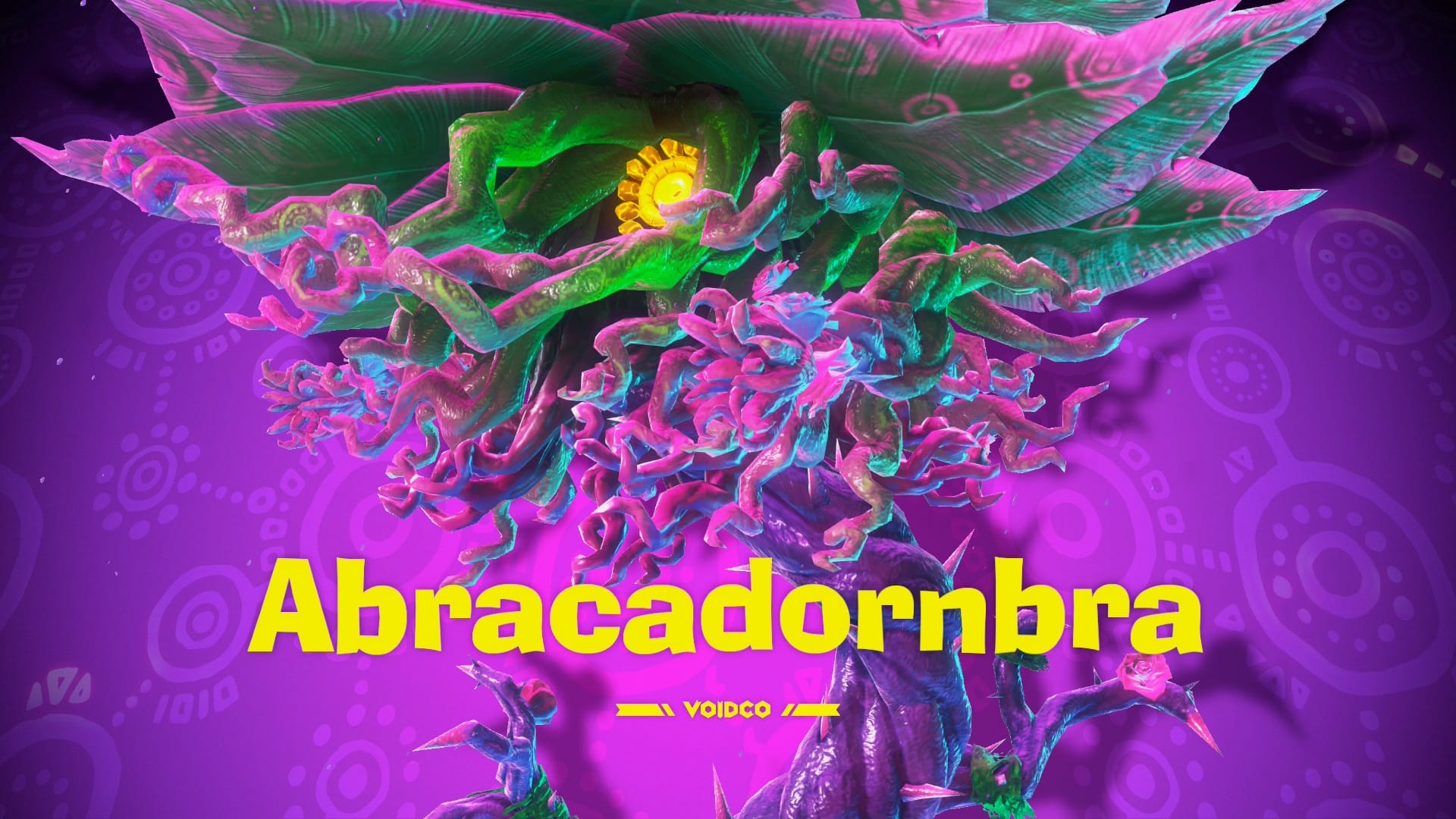
A tear here, a cry of joy there
As little as we can reveal about the specific content of Donkey Kong Bananza, we want to talk about our emotions at this point. Bananza is one of those exceptional titles that are easy to learn, difficult to master, and unforgettably good from start to finish. The game unleashes the whole range of emotions in us.
Joy over a new Bananza shape. Euphoria accompanied by a roar of “Yes, damn it!” and a Boris Becker victory fist when we finally overcome a tricky challenge. Of course, there’s also the opposite: “My f…, you stupid monkey, now climb that damn wall!” wall!
Tears roll down our cheeks when the story regularly builds to a moving climax. Laughter fills the living room when Donkey Kong makes one of his hilarious faces. Disgust spreads across our faces when we have to remove certain slimy residues. Pride overwhelms us when we find a particularly well-hidden banana.
The much-praised Nintendo magic
is at work here once again. The gaming experience is so well-rounded, polished to a high shine, meticulously crafted, and yet always light-hearted that we wouldn’t be surprised if Donkey Kong Bananza is mentioned in the same breath as Super Mario 64 or Galaxy in the future.
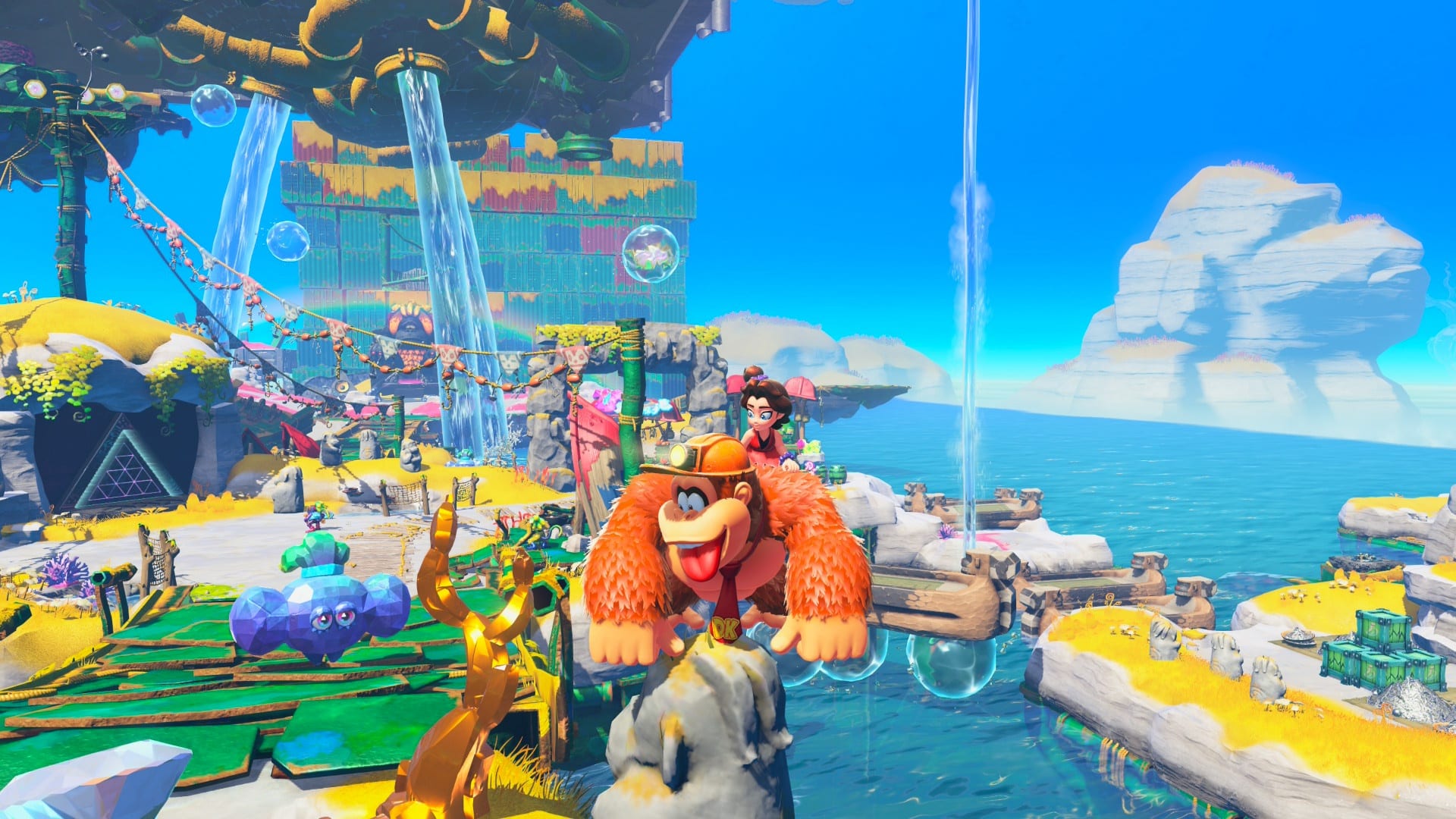
Nintendo Switch 2 and performance issues? Our experience
Before Bananza was released, there were reports that the game was struggling with performance issues. In particular, the frame rate of 60 FPS was said to often stutter. On our test system – a regular Switch 2 – we did not encounter any serious problems.
It’s true that the frame rate occasionally drops for a fraction of a second when there are a lot of effects on the screen. However, Bananza remains playable without any problems, and this brief FPS dip is often lost in the general hustle and bustle on the screen. During our approximately 40 hours of gameplay, we were never bothered by this or felt that it affected the gameplay.
All in all, Donkey Kong Bananza is a technically very mature title in our eyes, but its sophisticated voxel technology does cause the Switch 2 to break a sweat in places.
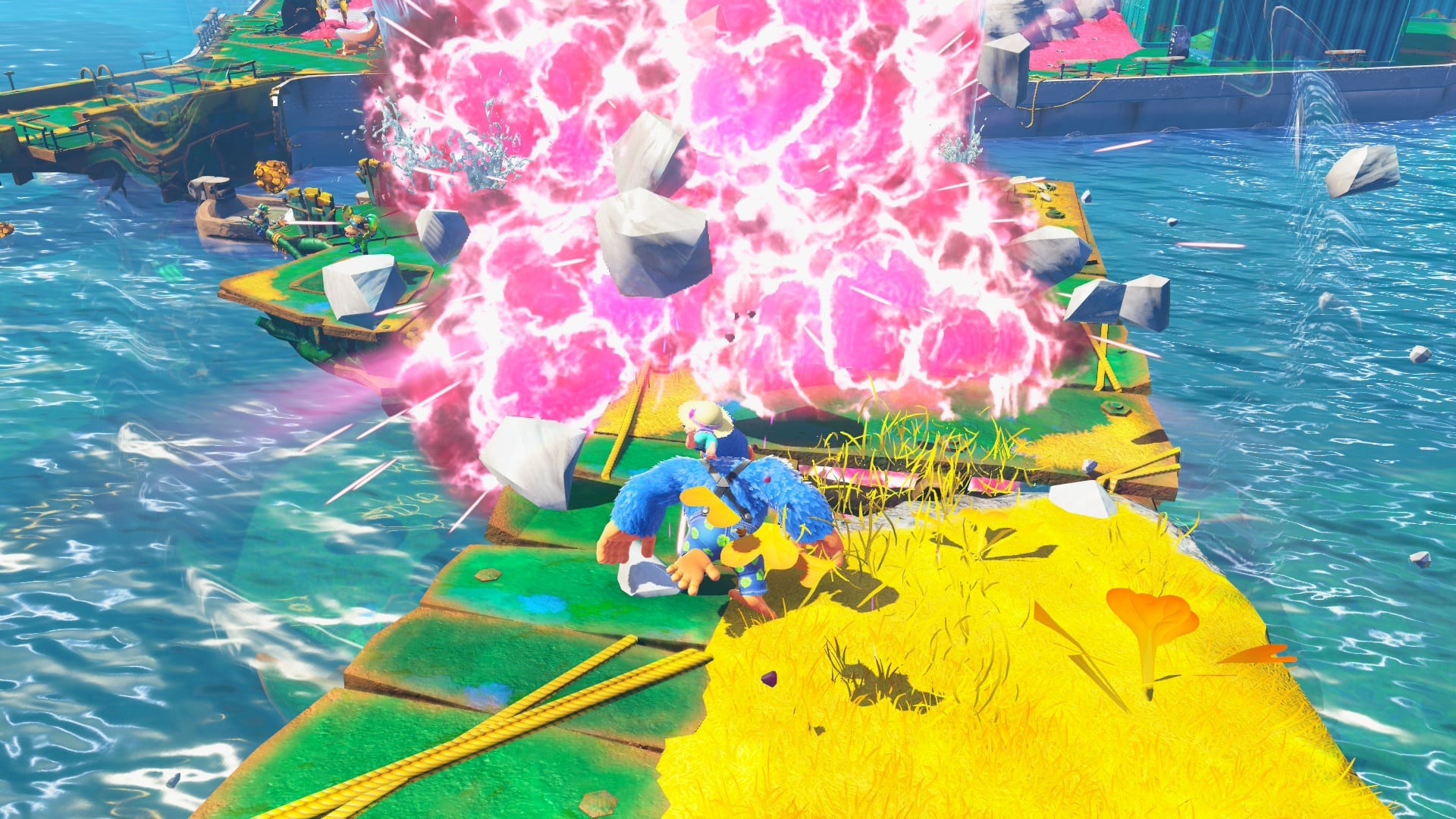
Who needs Super Mario?
Let’s conclude with a brief comparison to Nintendo’s flagship title. Despite the many parallels to earlier Mario jump ‘n’ run games, Donkey Kong Bananza goes its own way to create a new kind of gaming experience.
The destruction of the terrain fits DK’s cute and rough nature like a glove. While Mario jumps on his enemies’ heads, Donkey Kong punches them in the face. Where Mario laboriously searches for a way up, the monkey simply climbs up the wall. When the mustachioed plumber munches on a fire flower, DK drums up his matching animal form.
But Bananza doesn’t just feel like a Mario game in Donkey Kong clothing. It’s the result of decades of consistent development of Nintendo’s strengths, enriched with an innovatively used destruction mechanic and a heartwarming duo that sticks together through thick and thin.
Nintendo is back on the throne and has also raised the bar quite a bit for its internal competition.
Editor’s Conclusion
Donkey Kong Bananza couldn’t be a better way to pass the time while I’m melting away. It’s typical Nintendo: a simple idea is made the cornerstone of the gameplay and, as a result, is so well crafted that it creates a unique gaming experience. In the case of Bananza, it’s the terrain deformation.
Every blow against the rock feels immensely satisfying. The leisurely bashing of everything that gets in my way is an endless whirlpool of fun that I can’t escape. Even after completing the story, the game comes back and says, “Hey, I’ve got a surprise for you.” And then another. And another.
I’m particularly pleased with how well Nintendo has mastered the balancing act between nostalgia and modern reinterpretation in Donkey Kong. Those who have been experiencing adventures with the monkey since the 90s can look forward to a host of familiar faces. Those who are awakening the Kong in themselves for the first time will still be able to follow all the action without any problems.
By the way, there are hundreds of bananas in the game. I’m only halfway through and can’t wait to dive back into this masterpiece again and again.

